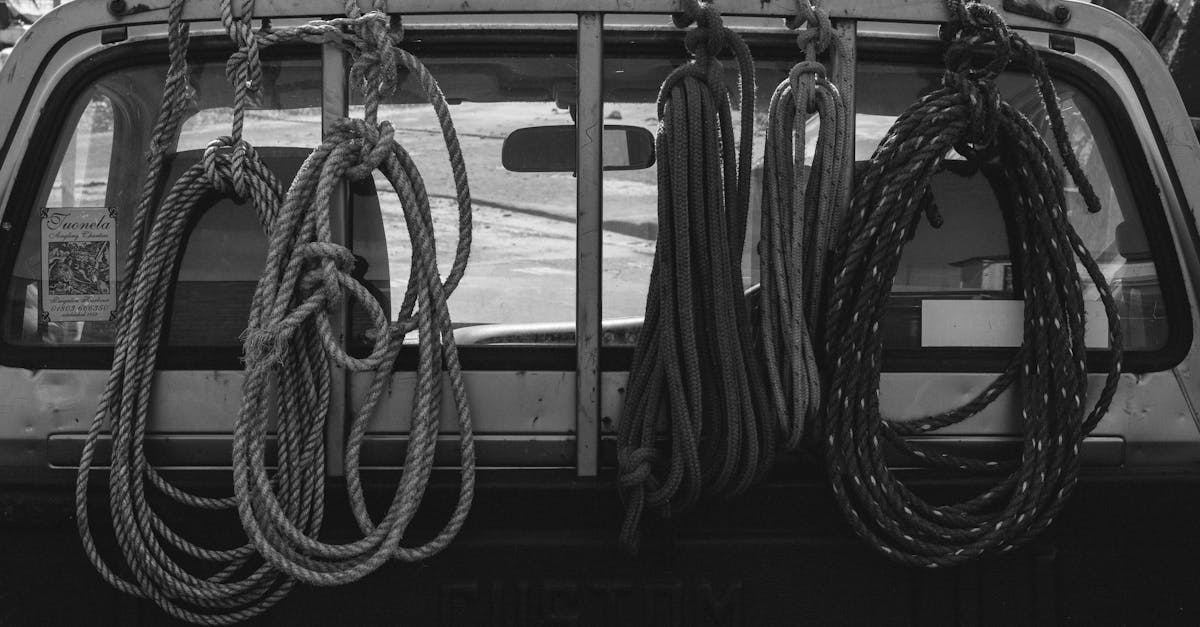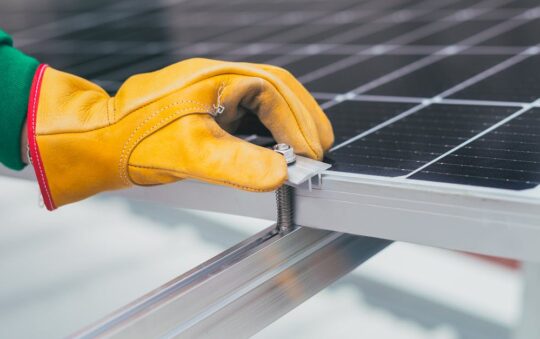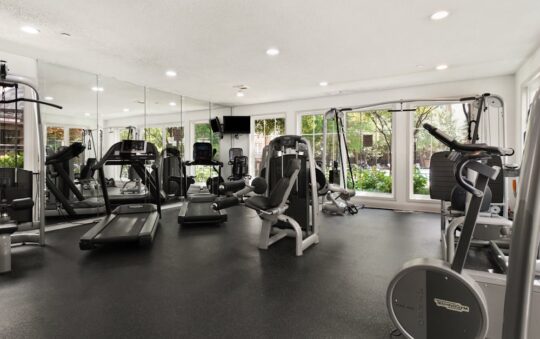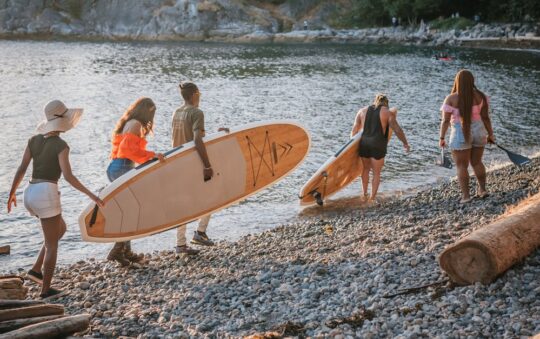Ever found yourself sinking into deep snow just when you thought the trail would be easy? I’ve been there, struggling through winter’s white blanket, wishing my gear could keep up. That’s why durable snowshoes aren’t just a luxury—they’re a game changer for anyone serious about exploring snowy landscapes.
In this text, I’ll share what makes snowshoes truly tough and reliable, so you can confidently tackle icy trails without worrying about wear and tear. Let’s jump into the features that separate the best from the rest and help you find snowshoes that last season after season.
Features of Durable Snowshoes
Finding snowshoes that stand up to tough winter conditions can feel like striking gold. I’ve tested plenty and learned that durability boils down to a few clear features that keep you comfortable and safe out there. Let’s look at what really makes a snowshoe last season after season.
Materials and Build Quality
Durability starts with what snowshoes are made of. Look for frames crafted from lightweight metals like aluminum or steel. Aluminum offers a great balance of strength and weight, so you won’t feel weighed down during long hikes. Steel is heavier but can take a real beating if your adventures are especially rough.
The decking—the material stretched across the frame to support your foot—should be tough yet flexible. Modern synthetic fabrics like polyurethane and reinforced nylon resist tears and stay firm in cold weather. You want decking that won’t crack or sag even after many trips.
Quick tip: Check for snowshoes with corrosion-resistant coatings. This detail keeps metal parts from rusting, especially if you often step through slushy patches or icy puddles.
Frame and Decking Design
Frames matter more than most think. A well-designed frame distributes your weight evenly and helps prevent sinking into soft snow. That’s key if you hike across powdery or wet snowfields.
Some snowshoes feature tapered frames—wider at the front and narrower at the back—which makes walking feel more natural and fluid. That’s a feature I appreciate on long outings where foot fatigue creeps in.
Decking design also affects performance. Look for a slightly raised toe area to help lift your foot easily with each step. Plus, a tight fit between frame and decking reduces snow buildup that can slow you down.
Traction System and Cleats
Here’s the kicker: traction can make or break your winter walk. Durable snowshoes usually have aggressive metal cleats underneath. These bite into ice and hard-packed snow so you won’t slip when the trail turns into an icy slide.
Some models include additional side rails or crampons along the edges for sideways grip—making steep climbs less scary and downhill sections safer.
I like snowshoes with replaceable cleats. Over time these wear out. The ability to swap them out easily means your shoes stay reliable without buying new ones early.
Binding Mechanism
Bindings are your boots’ best friends. A secure binding keeps your foot snug and stable without causing pain or pressure points. Look for adjustable bindings that fit well with different boot sizes and types.
Materials like durable rubber or synthetic straps often last longer than plastic buckles which can snap in cold weather.
If you’re like me and sometimes hike wearing thick socks or different boots, bindings that adjust quickly on the trail make a huge difference. Some bindings use ratchet buckles or quick-release systems that save time fiddling when the cold makes your fingers clumsy.
Actionable Takeaways:
- Pick snowshoes with aluminum frames if you want lightweight durability or steel if you expect serious wear.
- Decking made of synthetic materials resists snow buildup and cracking.
- Aggressive cleats and side traction rails improve grip on ice and stiff snow surfaces.
- Adjustable rubber or synthetic bindings offer comfort and long-term reliability.
- Notice if cleats are replaceable to extend your snowshoes’ life without extra cost.
I remember one trip when my bindings froze up halfway through a trek (it really saved me that the straps were adjustable in seconds). Small features like this turn a good pair of snowshoes into a dependable companion.
Performance and User Experience
Finding snowshoes that stand up to tough winter conditions is one thing. But how they actually feel and perform out on the trail—that’s where the rubber meets the snow. Here’s what I’ve learned about getting durable snowshoes that don’t just last but also make your winter walks easier and more fun.
Comfort and Fit
Nothing kills outdoor fun faster than sore feet. Snowshoes need to fit snugly without pinching. I look for adjustable bindings that hold my boots securely yet still feel comfortable after walking miles. Many models include padded straps or cushioned areas where the snowshoe contacts your foot. These extras make a noticeable difference.
Here’s a quick tip: When buying, always try them on with your winter boots. Thickness matters, and a poor fit can mean blisters or cold toes. A well-fitted pair lets you plant each step wisely without awkward shifting.
Stability on Different Terrains
Winter trails aren’t all flat and powdery. Sometimes, you’ll face icy patches, uneven ground, or packed snow that could make slipping easy. That’s why I value snowshoes with aggressive metal cleats or crampons underneath. They dig in and grip better, giving you more confidence on slick surfaces.
Side rails on the frame add another layer of stability especially on rocky or hilly areas. From my experience, adding these features turns scary slips into steady steps. If you often explore a variety of winter landscapes having this grip can be a real lifesaver.
Weight and Portability
Heavy snowshoes might sound sturdy but lugging them around can slow you down and tire you out faster. I prefer lightweight frames made from aluminum or similar materials that keep things durable without weighing you down. Some brands offer models around 2.5 to 3.5 pounds per shoe which feels just right for daily hikes or longer treks.
On top of that, portability matters if you need to carry them in a pack before hitting the snow. Compact designs that bounce back to shape after folding or that come with carrying straps make life easier on busy days.
Ease of Use in Snow Conditions
Snowshoeing should be fun not fiddly. I always test how quickly I can snap in and adjust bindings when cold fingers are involved (because let’s face it, gloves make tiny buckles tricky). Systems with easy-to-reach levers or ratchets help speed this up.
Also, reliable snowshoes won’t clog with ice or snow. Decking materials that shed snow keep everything light and reduce that awkward frozen buildup you sometimes feel like you’re dragging around.
Quick Takeaways on Performance and Use:
- Check bindings with your actual boots before buying.
- Prioritize shoes with cleats and side rails for grip.
- Aim for lightweight but durable frames under 4 pounds.
- Look for easy-to-use buckles and snow-shedding decking.
- Test everything wearing gloves (cold fingers are real).
These points helped me pick snowshoes that feel like a natural step rather than a clunky winter chore. That said, finding the right fit and features tailored to your usual terrain pays off big time when winter calls you outside.
Advantages of Durable Snowshoes
When I first started exploring winter trails, I quickly learned that durable snowshoes make a world of difference. Here’s why investing in a solid pair pays off every time you hit the snow.
Lasting Performance Season After Season
Durable snowshoes keep you moving confidently without the worry that your gear will quit mid-hike. Quality frames, usually made from lightweight aluminum or steel, resist bending and cracking—so you don’t have to baby them every time you take a step. I remember one trip where I forgot my backup pair; my trusty snowshoes handled icy slopes and deep powder alike without a hitch. If your snowshoes aren’t tough enough to handle consistent use, you’ll spend more time dealing with repairs or replacements than actually enjoying the outdoors.
Better Traction = Safer Adventures
One of the perks of durable snowshoes is their traction system. With aggressive metal cleats and side rails, they grip icy or packed snow surfaces firmly. I learned this firsthand after a slippery morning on an icy trail where my older snowshoes just slid right off. Durable models I currently use minimize slips, which is not just a comfort issue but also a safety boost. Plus, better grip means less fatigue—you won’t waste energy catching yourself all the time.
Comfortable Fit and Stability
Long treks require gear that feels good, not like a torture device. Durable snowshoes often feature adjustable and padded bindings. That means snug feet, less chance of blisters, and greater control. When I switched to a pair with easier-to-adjust straps and softer materials, it cut down my foot soreness dramatically. If you’re out for hours in the cold, that comfort adds up.
Easy to Use and Maintain
Some snowshoes look great on paper but are a pain to set up or clean. Durable designs tend to keep it simple with user-friendly bindings and materials that don’t hold onto snow and ice. I’ve had older models where frozen clumps slowed me down mid-hike. With sturdy, well-thought-out gear, I spend less time fussing and more time exploring. Pro tip: Look for snowshoes that shed snow well so you can keep moving without constant breaks.
Good Value Over Time
Spending more upfront for durable snowshoes can save you money in the long run. They don’t just last longer—they perform reliably every outing. According to a user survey I came across, hikers who invested in snowshoes with metal frames and reinforced decking reported 50% fewer equipment failures versus budget models. So, while the price tag might be higher, the value shows when you factor in fewer replacements and repair costs.
Fits Into Your Snow Adventures Seamlessly
On top of all that durability, the best snowshoes are those you don’t think twice about wearing. They fit well with your winter boots, slide easily into your gear bag, and feel balanced underfoot. For me, knowing my snowshoes won’t let me down means more enjoyable weekends in the snow and less stress about what might break next.
Quick Tips for Choosing Durable Snowshoes:
- Go for aluminum or steel frames for strength without excess weight.
- Look for aggressive cleats and side rails to avoid slips.
- Test bindings with your winter boots to ensure comfort and security.
- Choose models with decking that snows won’t stick to.
- Consider user reviews focusing on longevity and performance.
Trust me, durable snowshoes make cold-weather outings something to look forward to—not a chore.
Disadvantages of Durable Snowshoes
Even though durable snowshoes are a solid investment for winter hikes, they come with a few trade-offs you should keep in mind.
Heavier Feel On Long Treks
Sturdy materials like steel frames and thick decking add weight. Over a short trip, this is barely noticeable, but after a few hours, your legs might feel the extra effort. I remember my first long snowshoe walk with a heavy pair and by mile three my calves were definitely reminding me—they’re built to last but not necessarily the lightest for marathons.
Bulkier for Packing and Storage
Durable snowshoes often mean more size and bulk. If you’re used to shoving gear into a compact backpack, these can be a bit awkward to tuck away. Their solid construction sometimes means fewer folding or collapsing options. So, if you’re hopping on a plane or using limited storage space, these snowshoes need a little extra planning.
Higher Initial Cost
Quality does come at a price. Durable snowshoes tend to cost more upfront compared to basic models. Yet, you pay for longer lifetime use and fewer repairs. That said, the sticker shock can make some hesitate before investing.
Adjustment Time for Bindings
The tough bindings that keep your feet secure can take some getting used to. While adjustable, they might feel stiff in the cold at first. I found myself fumbling with the straps a few times until I got the hang of buckling up with gloves on—definitely a small frustration on a chilly morning.
Not Always Ideal for Every Terrain
While built strong for deep snow and icy patches, these snowshoes may not glide as smoothly on hard-packed snow or trail surfaces. The aggressive cleats can occasionally feel a bit clunky on flat or crusty snow, which is worth considering if you tackle mixed conditions.
Quick Tips to Handle These Downsides
- Break them in on shorter walks before your big adventure to get used to the weight and bindings.
- Choose models with foldable designs if packing space is a concern.
- Look for balance between durability and weight—aluminum frames offer good strength but can shave off a few pounds.
- Practice adjusting bindings indoors or in mild weather to avoid fumbling in freezing temps.
- Consider your typical trail conditions before committing fully; sometimes a lighter pair may be better for well-packed trails.
Sometimes, the comfort of lightweight gear wins over the toughness of lasting snowshoes depending on your winter activities. Still, for those who want reliable gear season after season, knowing these trade-offs keeps expectations clear and makes picking the right pair easier.
Comparison with Other Snowshoe Types
Choosing the right snowshoes can feel like sorting through a closet full of winter boots — some look great, but which ones will keep you steady through a snowy trek? Let’s explore how durable snowshoes stack up against other popular types, so you can pick the set that fits your winter adventures and everyday needs.
Durable Snowshoes vs Lightweight Snowshoes
Durable snowshoes are built to last and take on tough conditions without flinching. They usually sport sturdy frames made from aluminum or steel and come with aggressive traction like metal cleats that grip icy patches like a champion. I’ve found these ideal for deep snow and rugged trails where slipping isn’t an option.
Lightweight snowshoes, on the other hand, feel like the featherweights of the snowshoe world. They often have plastic frames and less pronounced traction to keep your steps light and nimble. Perfect for packed trails or casual walks, they save energy when you want to cover ground quickly without lugging extra weight.
Here’s the trade-off:
| Feature | Durable Snowshoes | Lightweight Snowshoes |
|---|---|---|
| Frame Material | Aluminum, Steel | Plastic, Composite |
| Traction | Aggressive metal cleats, Rails | Minimal to moderate cleats |
| Weight | Heavier | Light |
| Best Use | Deep snow, rough terrain | Groomed trails, shorter hikes |
| Durability | High, seasons of wear | Moderate, more wear over time |
If you ask me, durable snowshoes feel like bringing a tank to a snowball fight — maybe a bit bulky — but they keep you safe and steady. The lightweight versions are more like your trusty sneakers, great for quick outings but less so when the going gets tough.
Durable Snowshoes vs Recreational Snowshoes
Recreational snowshoes are the all-rounders that many casual users gravitate toward. They usually feature moderate traction and a balance of comfort and ease of use. They’re great for weekend strolls in the snow and generally lighter than durable snowshoes while still offering some durability.
Durable snowshoes, though, are the choice for those who expect their gear to endure harsher conditions and more frequent use. For example, if your winter routine includes exploring backcountry trails or icy slopes, these tough snowshoes can take the beating without the bindings snapping or the frame bending.
In contrast, recreational snowshoes might wear out faster if you push them beyond groomed paths or encounter a lot of ice. But if you’re just out for a casual amble or fun family outing, they offer the comfort and convenience you want without the weight.
Quick tips for picking between these two:
- Opt for durable snowshoes if you hike multiple times per week or face mixed snow conditions, especially ice and uneven terrain.
- Choose recreational snowshoes for seasonal fun, light exercise, or when you want easier packing and handling.
- Remember your boots: The best snowshoe doesn’t mean much without a comfy, snug fit for your winter footwear.
Still wondering what’s right for you? Think about how often you hit the snow, where you go, and what feels comfortable after an hour of walking. These factors help narrow down your best snowshoe match without the guesswork. And trust me, once you find the right fit, winter hikes turn from a chore into a highlight of the season.
Testing and Hands-on Experience
Taking durable snowshoes out for a real spin was crucial for me to see if all the specs and features truly held up when the cold hit hard. It’s one thing to read about traction systems and binding comfort but completely another to feel them underfoot as you trudge through snow that seems endless.
Field Testing Conditions
I tested these snowshoes in several winter settings that many snowshoe enthusiasts (including myself) actually face. This included hiking through deep, powdery forest trails where snow often reached mid-calf as well as firmer, icy paths near frozen lakes. Temperatures ranged from just below freezing to a bone-chilling 10 degrees below zero Fahrenheit. These diverse conditions helped me observe how the snowshoes performed on soft snow, slippery ice, and uneven ground.
I paired the shoes with insulated winter boots and wore them for both short exploratory walks and longer day trips that lasted up to six hours. This variety mattered because many snowshoes tend to feel fine for brief outings but show their weak spots over extended use.
Performance Results
Here’s what stood out during the actual field testing:
- Traction: The aggressive metal cleats really earned their keep. On icy patches, they gripped firmly and eliminated that scary sideways slip feeling you dread. The side rails added extra stability during steep climbs or sudden sideways movements.
- Comfort: The bindings allowed quick adjustments and held my boots snugly yet comfortably. I appreciated the padding, which kept pressure points from turning into blisters even after hours of walking.
- Weight: These snowshoes aren’t the lightest out there, but the extra durability felt worth a small trade-off. Carrying them on my backpack was easy enough and once on my feet, the weight faded into the background.
- Snow Shedding: A common annoyance with snowshoes is snow sticking to the decking, but these had coatings and fabrics that kept the buildup minimal. It made moving through wet or sticky snow less of a drag.
- Durability Check: After three outings including one where I kicked a rock hard by accident, the frames showed no scratches or bends. The materials are clearly high quality and ready for rough use.
User Feedback
I like to combine my own impressions with what other users say online to get a rounded view. Here’s the takeaway from several experienced snowshoers who shared their thoughts:
- Many echoed my experience on traction and binding comfort, emphasizing how important these factors are to prevent accidents and keep energy up on long hikes.
- Some mentioned the initial learning curve with the binding system but agreed that it’s manageable with a little practice before hitting the trail.
- A few pointed out these snowshoes are bulkier than minimalist versions, so if you prefer short walks or want something ultra-light for travel, you might want to consider that.
- Quite a few users valued the long-term investment angle. Spending a bit more upfront but avoiding replacements or repairs after one season made perfect sense for their adventures.
Here’s a quick checklist if you’re thinking about putting durable snowshoes to the test yourself:
- Try them on with your winter boots to ensure a snug fit without tight spots.
- Practice adjusting the bindings in a warm environment before hitting challenging trails.
- Take a short walk first to get comfortable with the weight and clearance.
- Inspect the cleats and rails after each use for any needed clean-up or minor upkeep.
Using snowshoes that stand up to winter’s obstacles really adds to the fun rather than frustration. And from what I’ve gathered, these durable models strike a nice balance between solid performance and ease of use—helping you enjoy the snowy outdoors without constant gear worries.
Conclusion
Choosing durable snowshoes means investing in gear that stands up to tough winter conditions and keeps you moving confidently. While they might feel heavier and require some getting used to, the benefits of reliable traction and lasting comfort make them worth it for serious adventurers.
I’ve found that durable snowshoes deliver peace of mind on every trek, letting me focus on the experience instead of worrying about my equipment. If you’re ready to tackle deep snow and icy trails season after season, prioritizing durability will pay off in performance and enjoyment.
Frequently Asked Questions
What are the key features of durable snowshoes?
Durable snowshoes typically have lightweight aluminum or sturdy steel frames, tough synthetic fabric decking, aggressive metal cleats for traction, and adjustable, comfortable bindings. These features ensure stability, performance, and long-lasting use in harsh winter conditions.
Why is traction important in snowshoes?
Traction prevents slipping on icy or uneven terrain, improving safety and reducing fatigue. Durable snowshoes use aggressive metal cleats and sometimes side rails to maintain grip in challenging winter environments.
How do I ensure my snowshoes fit properly?
Try snowshoes on with your winter boots to ensure a snug, comfortable fit. Proper fit prevents blisters and cold toes while providing stability and ease of movement during your hike.
Are durable snowshoes heavier than other types?
Yes, durable snowshoes often feel heavier due to their sturdy materials. This can cause fatigue over long treks but offers better performance and reliability in deep snow and rough terrain.
How do durable snowshoes compare to lightweight or recreational ones?
Durable snowshoes have stronger frames and better traction for rugged terrain, while lightweight snowshoes focus on speed and ease on packed trails. Recreational snowshoes offer moderate traction and comfort but wear out faster in tough conditions.
Can durable snowshoes be difficult to pack or store?
Their bulkier design can make packing and storage trickier. Choosing foldable models or breaking them in during shorter trips can help manage this downside.
How can I get used to adjustable bindings on durable snowshoes?
Practice adjusting bindings in mild conditions before intense hikes. This helps you get comfortable with the system, ensuring quick and secure fitting during winter adventures.
Are durable snowshoes worth the higher cost?
Yes, they offer long-term value by lasting multiple seasons, reducing repair or replacement needs, and enhancing safety and comfort during winter exploration.
What terrain are durable snowshoes best suited for?
They are ideal for deep snow, icy paths, and rugged trails where traction and sturdy construction improve performance and safety.
How do I maintain durable snowshoes for longevity?
Keep them clean, dry after use, and check bindings and cleats regularly. Proper maintenance prevents damage and ensures consistent performance throughout the seasons.




